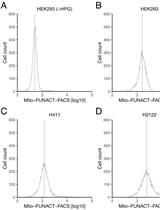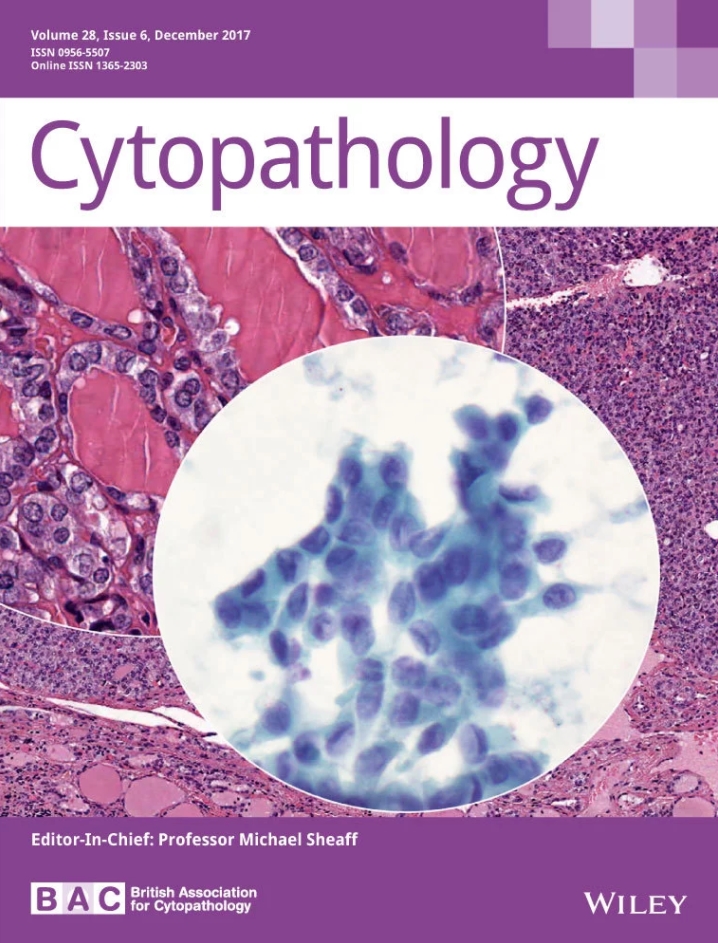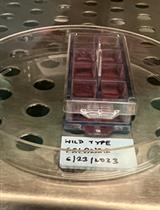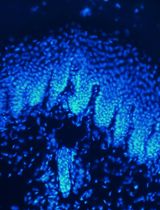- EN - English
- CN - 中文
Quantifying Podocytes and Parietal Epithelial Cells in Human Urine Using Liquid-based Cytology and WT1 Immunoenzyme Staining
使用基于液体的细胞学检查和WT1免疫酶染色定量人尿中的足细胞和壁层上皮细胞
发布: 2018年05月05日第8卷第9期 DOI: 10.21769/BioProtoc.2827 浏览次数: 7167
评审: Di WangHaixia XuAnonymous reviewer(s)

相关实验方案

使用 Mito-FUNCAT FACS 对哺乳动物细胞中线粒体蛋白合成进行高通量评估
Hironori Saito [...] Shintaro Iwasaki
2023年02月05日 1571 阅读
Abstract
In glomerular disease, podocytes and parietal epithelial cells (PECs) are shed in the urine. Therefore, urinary podocytes and PECs are noninvasive biomarkers of glomerular disease. The purpose of this protocol is to employ immunocytochemistry to detect podocytes and PECs, using the WT1 antibody on liquid-based cytology slides.
Keywords: Podocytes (足细胞)Background
Podocytes line the exterior of glomerular capillaries and thus face the Bowman’s capsule and primary urine. In glomerular injury, podocytes may detach from the glomerular basement membrane. The detachment of podocytes and their shedding in the urine have been implicated in the progression of glomerular diseases and crescent formation. Parietal epithelial cells (PECs) cover the inner aspect of the Bowman’s capsule. Similar to podocytes, it has been reported that PECs positive for WT1, proliferate and are shed in the urine during active glomerular disease (Zhang et al., 2012; Fujita et al., 2017).
Previous studies have shown a relationship between the number of urinary podocytes and PECs and various types of glomerular disease (Hara et al., 1998; Nakamura et al., 2000; Achenbach et al., 2008). The studies cited above used conventional methods (direct smears and cytospin) to prepare the urine samples. However, these conventional methods have common problems, including an air-drying effect and the possibility of significant cell loss during the cytocentrifugation and fixation processes. In addition, standardization and quantitative evaluation are difficult with the conventional methods. Although most previous studies have used immunofluorescence staining with the podocalyxin antibody, this method is difficult to perform in small- and medium-sized hospitals because of the specialty antigen and the requirement for a fluorescence microscope.
A useful urinary biomarker test should be easy to perform and have minimal requirements for standardized sample preparation and immunocytochemistry. Therefore, we have devised a method for detecting podocytes and PECs by combining liquid-based cytology, the WT1 antibody, and immunoenzyme staining. SurePathTM liquid-based cytology was developed as a replacement for the conventional sample preparation method because of its better cell preservation and higher cell recovery rate. SurePathTM allows the possibility of standardization and quantitative evaluation, and this system can be operated manually without machines. Furthermore, immunoenzyme staining using the WT1 antibody is performed in most pathological laboratories. Therefore, our method can be an inexpensive, simple, and internationally standardized method for the detection of urinary podocytes and PECs.
Materials and Reagents
- Saline-soaked gauze balls
- Medicine spoon
- Conical centrifuge tube (Corning, Falcon®, catalog number: 352097 ) or equivalent
- Kimwipes (KCWW, Kimberly-Clark, catalog number: 34133 ) or equivalent
- PAP pen (Abcam, catalog number: ab2601 ) or equivalent
- BD TotalysTM Slide Prep Slide Rack (BD, catalog number: 491294 )
- Coverslip (Matsunami Glass, catalog number: C024321 ) or equivalent
- BD SurePathTM Manual Method Kit (including settling chamber and positively charged slide) (BD, catalog number: 491266 )
- BD CytoRichTM Red Preservative Fluid (BD, catalog number: 491336 )
- Ethanol (Wako Pure Chemical Industries, catalog number: 059-06957 ) or equivalent
- Methanol (Wako Pure Chemical Industries, catalog number: 136-09475 ) or equivalent
- Hydrogen peroxide (Wako Pure Chemical Industries, catalog number: 086-07445 ) or equivalent
- Phosphate-buffered saline (PBS) (Nichirei Biosciences, catalog number: 415223 ) or equivalent
- WT1 antibody (clone 6F-H2) (Agilent Technologies, catalog number: M3561 )
- Antibody diluent (Agilent Technologies, catalog number: S3022 ) or equivalent
- N-Histofine® Simple StainTM MAX PO (MULTI) (Nichirei Biosciences, catalog number: 414151F )
- N-Histofine® DAB-3S Kit (Nichirei Biosciences, catalog number: 415192F )
- Mayer’s hematoxylin (Muto Pure Chemicals, catalog number: 30002 ) or equivalent
- Xylene (Wako Pure Chemical Industries, catalog number: 245-00717 ) or equivalent
- Malinol (mounting medium) (Muto Pure Chemicals, catalog number: 20093 ) or equivalent
Equipment
- Pipette (Nichiryo, model: Nichipet EXII ) or equivalent
- Centrifuge (Kubota, model: M4000 ) or equivalent
- Vortex mixer (Scientific Industries, model: Vortex-Genie 2 ) or equivalent
- Microscope (Olympus, model: BX43 ) or equivalent
Procedure
文章信息
版权信息
© 2018 The Authors; exclusive licensee Bio-protocol LLC.
如何引用
Ohsaki, H., Matsunaga, T., Fujita, T., Tokuhara, Y., Kamoshida, S. and Sofue, T. (2018). Quantifying Podocytes and Parietal Epithelial Cells in Human Urine Using Liquid-based Cytology and WT1 Immunoenzyme Staining. Bio-protocol 8(9): e2827. DOI: 10.21769/BioProtoc.2827.
分类
细胞生物学 > 细胞染色 > 蛋白质
细胞生物学 > 基于细胞的分析方法 > 免疫细胞化学
您对这篇实验方法有问题吗?
在此处发布您的问题,我们将邀请本文作者来回答。同时,我们会将您的问题发布到Bio-protocol Exchange,以便寻求社区成员的帮助。
提问指南
+ 问题描述
写下详细的问题描述,包括所有有助于他人回答您问题的信息(例如实验过程、条件和相关图像等)。
Share
Bluesky
X
Copy link










